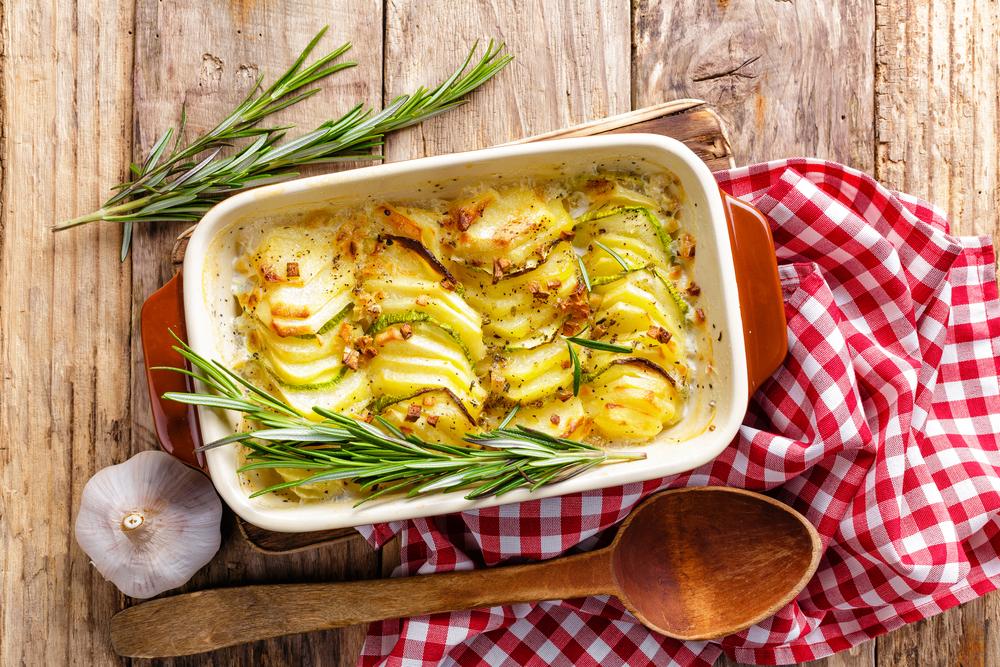As the saying goes, if it’s not broken, don’t fix it. I agree with this philosophy, but with one caveat: You can always add more cheese—especially when making a potato gratin.
Potato gratin is a cheese lover’s gift, with ultrathin layers of sliced potatoes blanketed in oozing cheese, cream, and, yes, more cheese. It’s a rich and comforting side dish, guaranteed to soothe any seasonal blahs with the promise of tipping a dinner to the luscious point of no return.





